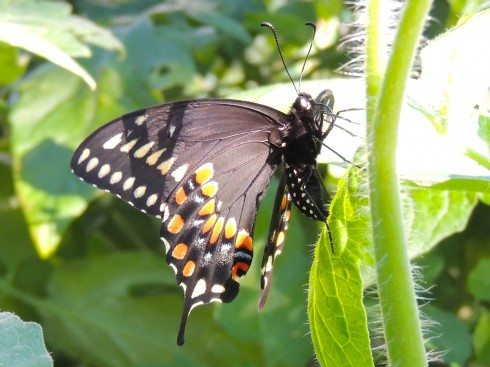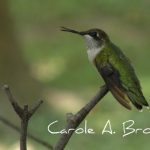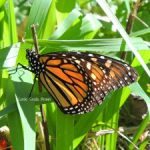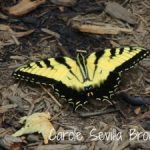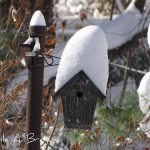Every sighting of a butterfly in my Ecosystem Garden is precious this year as very few butterflies seem to be about despite my best efforts of attracting them with native larval host plants.
But last week I discovered a freshly emerged adult Black Swallowtail butterfly posing on my tomato plants as it unfolded its wings, filled them with hemolymph, and readied to take its maiden flight.
Fortunately for me this process takes several hours, and I happily snapped away with my camera.

Then several days after that I found a tiny 1st instar Black Swallowtail caterpillar in my potted dill plants. It’s now a 2nd instar Black Swallowtail caterpillar, and I go out every morning hoping that it’s still there and to photograph its life progression.
Black Swallowtail caterpillars change their appearance with each instar, so I’m really hoping to be able to photograph all 5 of these stages, and then the transformation to chrysalis and then adult butterfly.
Here’s the story so far of the 2nd instar Black Swallowtail Caterpillar.
I’ve been taking photos every day of the Black Swallowtail Caterpillar in my Ecosystem Garden so that I can observe the changes that occur in the life cycle of this single caterpillar.
First thing every morning I head outside with my macro lens to take photos and follow its progress.
The Black Swallowtail (Papilio polyxenes) is a species of butterfly found in North America. It has a wingspan of 2.75 to 4 inches and is easily recognizable by its black wings with yellow and black markings and a “tail” on the hindwings. The larvae, or caterpillar, feed on plants in the carrot family such as dill, fennel, and parsley. The adult butterflies feed on nectar from a variety of flowers, including milkweed, thistle, and clover. It is most active during the day, and can be seen flying in the early morning and late afternoon.
The black swallowtail has a complete metamorphosis, with four stages: egg, larva, pupa, and adult. The species has several subspecies and regional variations in color and pattern. It is a common and widespread species, and is not considered to be endangered.
More information about Black Swallowtail Butterflies:
What Black and White Caterpillar Eats Carrots?
What Did Black Swallowtails Eat Before we Brought In Parsley, Dill, and Queen Anne’s Lace?
More From Ecosystem Gardening:
Submit your review | |
I too have a butterfly garden. Last year I had a whole crop of black swallowtail caterpillars and they defoliated the parsley I planted for them. I have also had many monarchs through the mild winter we've had in Tampa, but have not seen black swallow tail since perhaps October. I planted more parsley and have a huge 3' wide swath, plus dill and fennel. Any idea when the black swallowtails will become active again? The monarchs and gulf fritillaries are here, and making little cats.

